Lemon balm vs mint… they look very similar, but they’re actually quite different! They each have their own distinct aromas, taste profiles, uses medicinal properties, and growing habits.
You may be asking:
- Can they be used the same way?
- Do they taste similar?
- Which one has more medicinal value?
I’m about to answer all of your burning questions, so let’s jump in!
*Disclosure: This post may contain affiliate links to products (including Amazon). I’ll earn a small commission if you make a purchase through my link, at no additional cost to you! Regardless, I only link to products that I personally use on our homestead or believe in.
Characteristics of Lemon Balm vs Mint
While both lemon balm and mint look like the same plant at a glance, some key differences make them unique from each other in terms of appearance, taste, and aroma.
Appearance
Lemon balm and mint are both members of the Lamiaceae family of plants and share some visual similarities, but there are several key differences in their appearance.
Lemon Balm
Lemon balm has adorable, heart-shaped leaves that are bright green in color and have a slightly fuzzy texture to them. The leaves are also typically larger and they have a slightly scalloped edge compared to mint leaves.
The stems of lemon balm are square-shaped and are typically green in color, but might have a slight purple tint to them. The plant typically grows to be about 2 to 3 feet tall and has small white or yellow flowers that bloom in late spring or early summer.
Mint
Mint, on the other hand, has smaller and more pointed leaves that are a darker shade of green than lemon balm. The leaves are also smoother and more delicate than lemon balm leaves.
The stems of mint are also square-shaped and typically have a green or purplish hue. Mint plants can also grow up to 3 feet tall. They have small, tubular flowers that are usually pink, purple, or white in color, and they bloom in mid to late summer.
Taste
While they may look similar, lemon balm and mint actually taste very different from each other!
Lemon Balm
Lemon balm has a sweet, lemony flavor with a hint of mint, but more like lemonade. It boasts a mild, delicate taste with a refreshing citrusy aroma.
Mint
Mint, on the other hand, has a strong flavor that is distinctly minty and slightly spicy. It has a cool, crisp, and invigorating flavor with a refreshing aftertaste. Wonderful on a hot day!
Aroma
This is where their differences really shine! Lightly press a leaf and give it a whiff – they each have their own distinct aroma and elicit different emotions.
Lemon Balm
Lemon balm has a fresh, lemonade scent with a hint of mint that I just love! The aroma is mildly sweet and delicate, which is very calming and can help promote relaxation and reduce stress.
Mint
Mint, on the other hand, has a strong, refreshing aroma that is distinctly minty and slightly spicy. The scent of mint is cool and invigorating – perfect for stimulating the senses and providing a sense of clarity and focus.
Uses of Lemon Balm vs Mint
Lemon balm and mint can be used in two different manners. They can simply be used for a punch of flavor while cooking, but they also have medicinal properties for a therapeutic effect. Let’s break them down!
Culinary Uses
Lemon Balm
Lemon balm has been used in culinary traditions for centuries, thanks to its bright, lemony flavor and aroma. The leaves of the plant can be used fresh or dried in various dishes, from salads and soups to stews and sauces.
- In Mediterranean cuisine, lemon balm is often used to flavor fish, chicken, and lamb dishes
- In European and Middle Eastern cuisines, it is commonly used in desserts such as cakes, cookies, and custards.
Lemon balm is also commonly used in teas, herbal infusions, and cocktails, adding a refreshing and uplifting touch to these drinks. One of my favorite summer beverages is lemon balm-infused water – yum!
Mint
Mint’s refreshing flavor and aroma make it a popular ingredient in a variety of dishes, ranging from savory to sweet.
- In Mediterranean and Middle Eastern cuisines, mint is commonly used in dishes such as tabbouleh, hummus, and lamb kebabs, where it adds a fresh flavor.
- In Indian and Southeast Asian cuisines, mint is often used in chutneys, curries, and rice dishes, where it complements the spicy flavors of the cuisine.
Mint is also a popular addition to beverages, including teas and cocktails (mojito, anyone?), where it provides an uplifting note. Overall, mint is a versatile and delicious herb that can be used in a wide range of applications, making it a must-have in any kitchen!
Medical Uses
Lemon balm and mint have some amazing medicinal properties – I use them both in my home apothecary. Let’s compare the two!
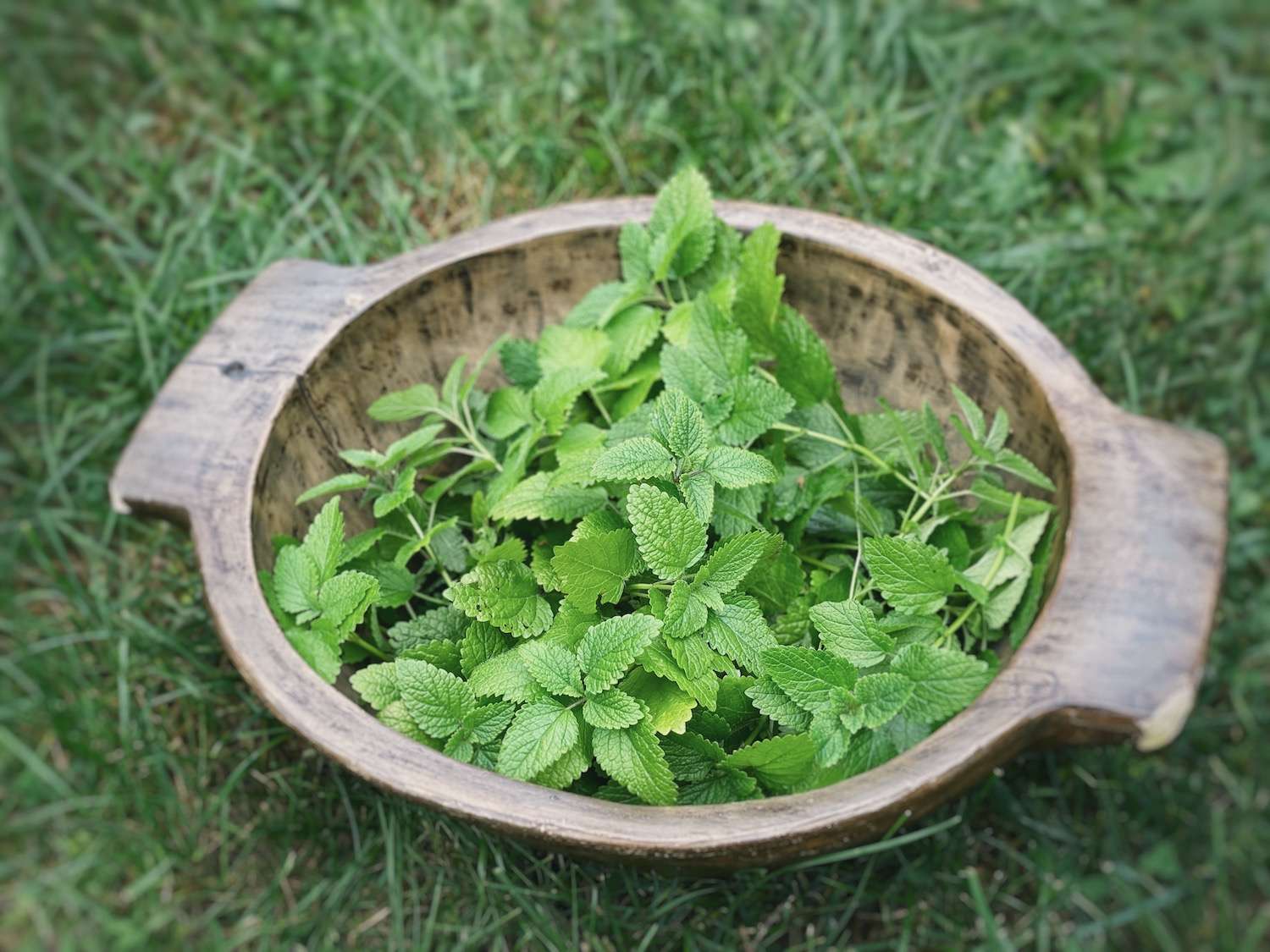
Lemon Balm
Lemon balm contains the volatile oils citral and citronellal, both of which are well-known for their calming and anti-spasmodic properties. Dried lemon balm is one of my favorites to keep in my apothecary.
Check out all of the amazing things that lemon balm can do!
- Soothes stomach upset
- Calms the nervous system
- Promotes relaxation before bed
- Aids in reducing anxiety, stress, sleep issues, and depression (Haybar, 2018)
- Combats seasonal affective disorder
- Calms restless behavior, ADD, and ADHD
- Fights against viruses thanks to its rich profile of polyphenols
- Reduces LDL cholesterol and liver enzymes (Jandaghi, 2016)
- Reduces blood sugar, blood pressure, and inflammatory markers (Asadi, 2019)
Mint
Mint contains the volatile oils menthol and menthone, both of which are excellent at cooling, soothing, and reducing inflammation.
Check out all the amazing things that mint can do!
- Relieves nausea and gas (Mahboubi, 2018)
- Inhibits the growth of harmful gut bacteria and supports beneficial strains (Chuchu, 2022)
- Anti-spasmodic by soothing stomach and muscle cramps
- Relieves pain from headaches, arthritis bee stings, burns, etc. (Mahboubi, 2017)
- Uplifting and mildly stimulating while also relaxing at the same time
- Stimulates blood flow while also cooling
- Antioxidant, anti-cancer, and anti-inflammatory properties (Eftekhari, 2021)
Side Effects & Precautions
While both lemon balm and mint are generally considered safe when used in moderation, some potential side effects should be noted.
Lemon Balm
Lemon balm can be a thyroid inhibitor, so if you have a thyroid condition or an underactive thyroid, please discuss it with your healthcare provider before using it.
It also has a mild sedative effect (which is a benefit for some users!), so use it with caution if you plan to use heavy machinery when trying lemon balm for the first time.
Mint
While mint is generally very safe, some can experience heartburn and nausea if consumed in large amounts by relaxing the lower esophageal sphincter (LES). The LES is what keeps stomach contents from creeping up the esophagus.
However, the research isn’t very strong to support this, so don’t write it off without giving it a try!
How to Grow Lemon Balm vs Mint
Since both lemon balm and mint are in the same Lamiaceae family, they grow similarly and both appreciate regular pruning, but there are still some differences to note!
Lemon Balm
Lemon balm is a perennial (zone 4-9) that’s very easy to grow. It prefers a sunny location with well-draining soil. It grows quickly but isn’t known to be invasive like mint.
Start your seeds 8 weeks before your last frost and space them 12-18 inches apart. Bonus: it attracts pollinators, so you’ll be helping out the bees and butterflies in your garden!
The Homesteading RD's Product Picks: | |
This is what I grow! A strongly aromatic herb with lemony fragrance and excellent medicinal and culinary qualities. Produces shiny green leaves on full plants up to 2’ tall. | |
Mint
Mint is an even hardier perennial (zone 3-9) and will take over your garden if you’re not careful! It spreads like crazy through an extensive root system, so I recommend planting it inside a pot (with the bottom cut out) or keeping it entirely separate in a container.
It is best planted as a root division or cutting, rather than by seed. Mint is more moisture-tolerant than most other herbs and prefers part sun over full sun. Bonus: it repels pests, so it’s a popular choice for companion planting.
The Homesteading RD's Product Picks: | |
This is what I grow! Peppermint plants are cool perennial and hybrid mints native to the Middle East and Europe. As a cross between spearmint and watermint varieties, Peppermint is a pungent plant with a fresh scent and slight pepper that's also referred to as “candy mint." | |
Other Articles You’ll Love:
- How to Dry Lemon Balm (3 EASY Methods!)
- Basil Plant Flowering? Here’s What to Do About It
- What Type of Microgreens Should I Grow?
Final Thoughts on Lemon Balm vs Mint
Lemon balm and mint are popular herbs that can be found in gardens around the world. While both plants have similar shapes and structures, the leaves, taste, and aromas of lemon balm and mint are distinct enough to tell them apart.
Whether you prefer the sweet, delicate flavor of lemon balm or the bold, refreshing taste of mint, both herbs are versatile, aromatic, and widely enjoyed by many. Let us know which one is your favorite in the comments below!
Are you interested in starting a garden, but you’re overwhelmed with where to start? Or maybe you’ve tried a garden in the past, but it flopped? Definitely check out my NEW course How to Plan a Garden: Step-By-Step!
*Information in this article was referenced from personal experience and/or from my favorite herbal medicine book Rosemary Gladstar’s Medicinal Herbs – A Beginner’s Guide unless otherwise noted.
The Homesteading RD's Product Picks | |
This is my go-to book! Make your own herbal remedies for life’s common ailments. Gladstar profiles 33 common healing plants and includes advice on growing, harvesting, preparing, and using herbs in healing tinctures, oils, and creams. | |

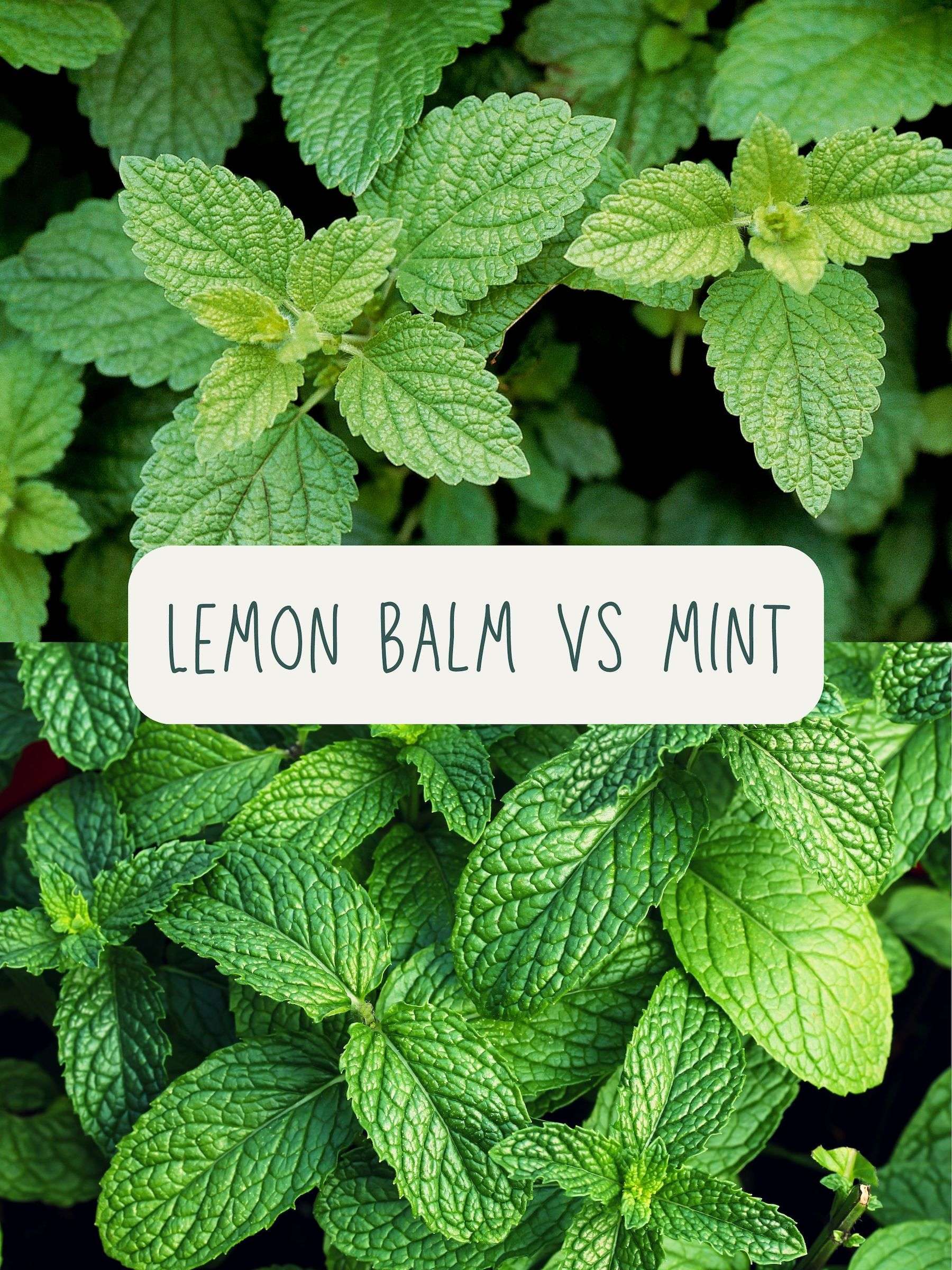
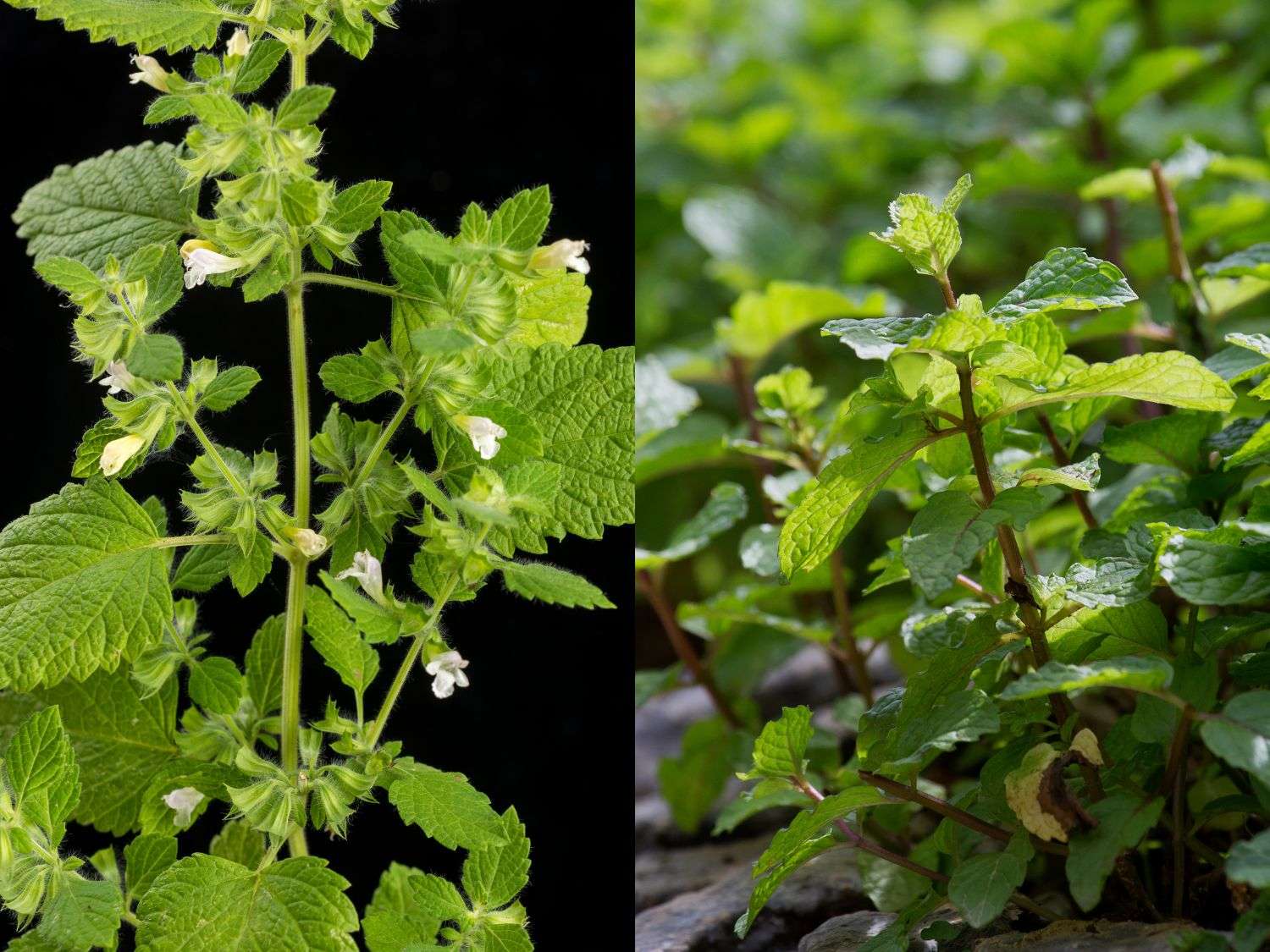
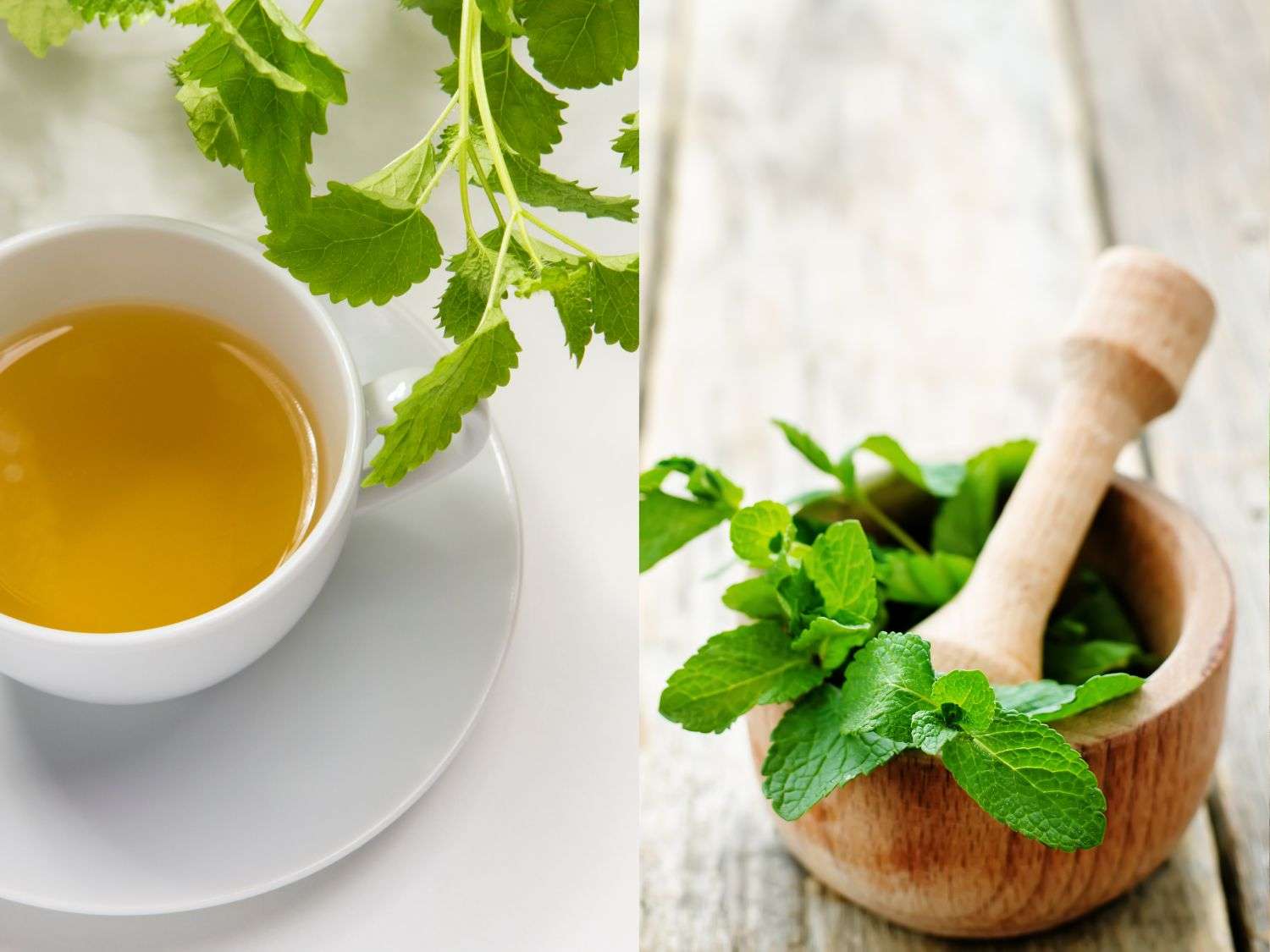
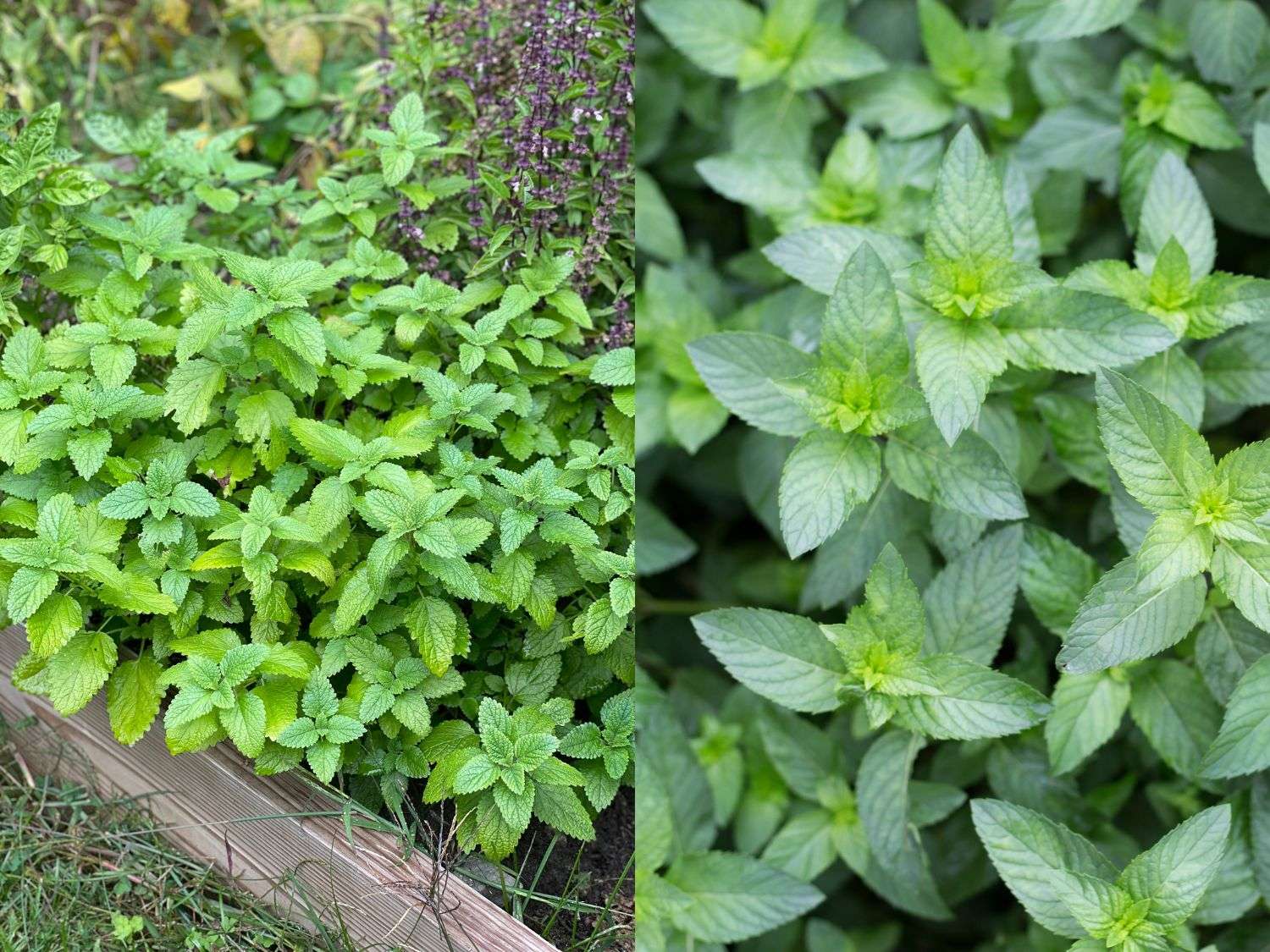





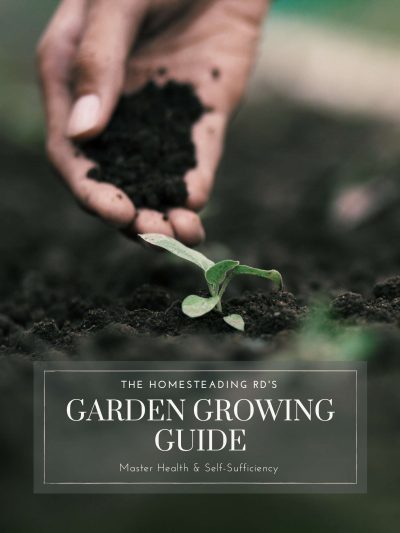
Great information! I’m looking to grow some mint for my tea and water this summer!
I love that!
I am growing two types of mint atm but I would not mind to add lemon balm to my little garden patch. Diversity is key so I’m team mint and team lemon balm 🙂
Me too! I love growing both 🙂
I grew up drinking mint tea all my life; I have acquired a love for the scent of mint. There are different species of mint and they all have different distinct scents.
Not sure if I have encountered lemon balm before, but the name alone tells it is pleasantly fragrant. Thank you for outlining their many health benefits
Mint tea is wonderful, isn’t it?! I hope you’ll encounter lemon balm soon – it is also amazing!
Very good article as we love to make drinks so understanding the difference is great, especially when you make many as we do.
I’m glad to hear that you found it helpful 🙂